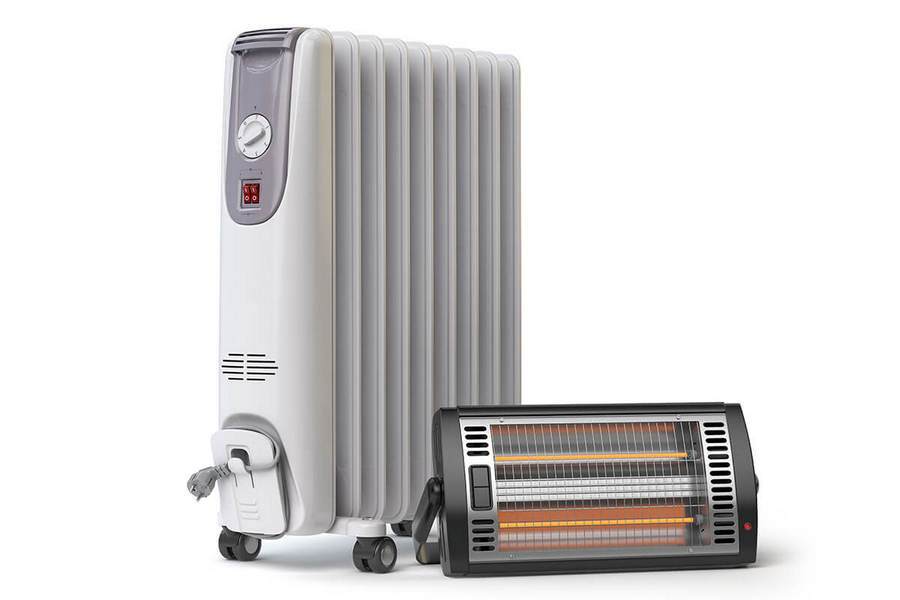When properly used and maintained, kerosene heaters shouldn’t let out any smoke or odor.
However, if neglected or if the oil is spilled, these appliances often cause issues for homeowners, letting out a strong smell that can permeate throughout the home.
Read on to find out why this might happen and how to stop your kerosene heater from smelling.
What Does Kerosene Smell Like?
Kerosene oil is a popular and safe fuel source, but it does have a distinctive smell. It’s usually described as an intense oily smell that’s very hard to eliminate, particularly from warm, poorly ventilated areas like most heated spaces are during winter.
When handled correctly by fuel heaters, you shouldn’t smell this odor for too long.
However, if the oil is spilled, the smell will probably remain for a long time, especially if you spill un-burnt oil inside the home or any closed area. If the spill happens more than once, the odor will only intensify, and it might become a health hazard.
Do All Kerosene Heaters Smell?
Good quality kerosene heaters won’t emit smells or smoke when working. New heaters shouldn’t smell, but old ones might, and for several reasons. This usually happens after you turn on your heater but stops after a few minutes.
It may also smell when you turn it off or when it runs out of fuel. If the odor remains after you keep operating it for several hours or when you turn it off, this might be a sign of malfunction.
Make sure to look at the cause and resolve it as soon as possible because it may lead to dangerous consequences.
Read also: Should You Get a Kerosene or Propane Heater?
10 Ways to Keep Kerosene Heaters From Smelling
Since changing the heater system can be costly, you may want to try to resolve your issue by troubleshooting your heater first. Here are the ten best ways to keep kerosene heaters from smelling.
1. Clean the old kerosene
Although stable, if improperly stored, kerosene can go stale, which will cause it to smell when heated up. If possible, use only fresh kerosene in your heater to avoid the odor and soot that comes with old oil.
If you want to save money and use up your old oil, you should filter it first and combine it with a fuel stabilizer. This will help you remove the contaminants from the oil, prevent their buildup in the future, and make the kerosene burn more efficiently.
2. Stabilize the burner
The burner should always lay flat inside the heater. Otherwise, it can’t function properly and will start to produce a smell and a lot of smoke too. Make sure to stabilize the burner before your light the heater.
You can do this by opening the hatch, adjusting and igniting the wick, and moving it back and forth to see if it’s properly seated. Close the hatch and watch it burn for at least 10 minutes to ensure the flame reaches the proper height.
3. Adjust the wick level
In most kerosene heaters, the flame should be ½ inch above the top of the burner. If it gets higher, this leads to smells and carbon monoxide buildup, which is dangerous. If it’s too low, the oil won’t burn properly, and, once again, you’ll have a smelly heater.
How you adjust the wick level depends on your heater, so make sure to check its manual. For some older models, you’ll need to cut the wick about 2mm after each use.
4. Clean or replace the wick
Over time, soot will deposit on the heater’s wick. Trimming it may help resolve this issue. However, if your heater doesn’t require frequent trimming, you’ll need to find another solution, like cleaning the wick.
This will save money on buying new wicks, which is another alternative. If you opt for the latter, get good-quality wicks. They may cost you more, but cheap wicks are usually too thin and can let vaporized hydrocarbons through gaps in the wick, resulting in smells.
5. Lower the wick after cleaning it
Fiberglass wicks can be cleaned with dry burning. However, this requires you to elevate them – and if you leave the wick in that position, the kerosene will travel into the catalytic converter.
Put the wick down into its original position to prevent the oil from going upwards and producing smoke and odor in the converter.
6. Burn off dust before use
Another reason you may experience kerosene heater smell is because you forget to clean it before putting it away the previous season. So, when you light it again at the beginning of the new season, the dust and debris collected in the heater will start to burn, leading to a strong odor.
Burn off the dust outdoors to prevent this. Take it outside, light it and leave it on for at least 10 minutes to make the smell dissipate.
7. Shut down the heater outside
Ideally, you should keep your heater in a well-ventilated area. And most importantly, you should always shut it down outside, where the smell of the oil can dissipate. This will help you avoid the buildup of odor and of dangerous, odorless gases such as carbon monoxide.
Otherwise, the gas will be trapped inside your home and make you ill. If you can’t carry it into an open area, have windows open when you turn the heater on and off.
8. Clean the fuel tank
Avoid storing your kerosene heater with fuel to prevent the oil from clunking up. Otherwise, you’ll need to clean the tank before using it again. Siphon out any old oil from the tank and use good quality fresh kerosene to clean the tank from the inside.
Remove the oil you used for cleaning and replace it new one once again. Don’t use the one you cleaned your tank with for heating because it has too many contaminants and will lead to the same issue.
9. Check your vent cap
A loose or damaged vent cap can also lead to kerosene heater smell. It lets out the un-burnt vapors from the tank and the oxygen in, which also causes fuel waste.
See if there are any cracks around the cap or if the vent is damaged. If there is, you’ll need to replace your cap to stop wasting fuel you could be using for heating up your space.
10. Use an Odor Eliminator
Adding baking soda can help neutralize the smell coming from your heater. Add a small amount into the tank after using the heater and shake it to mix it with the fuel. You can also purchase a kerosene odor eliminator at your local hardware store.
These additives also increase the efficacy of your heater. Make sure to get a product that’s compatible with the fuel you’re using.
Final Thoughts
Now you know why your kerosene heater may start to smell and how to fix it if this happens. Look into the probable cause and try to resolve it as soon as possible. The oily smell will probably linger for a while even after you resolve the issue, so be patient while you wait for it to go away. If it remains after a few days, you may want to check another possible cause on the list.







